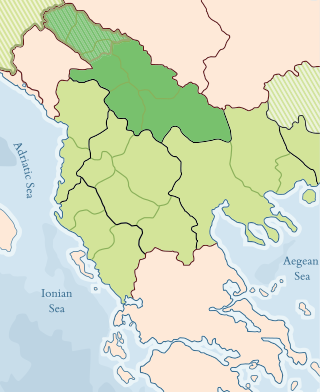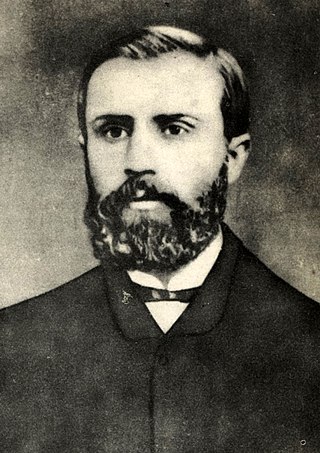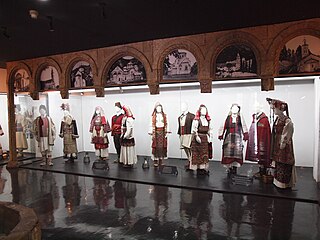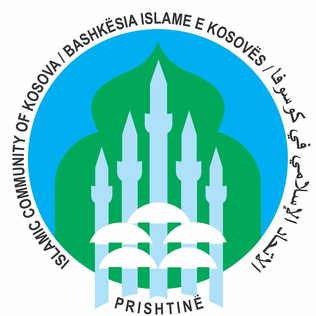Islam in Pristina

Islam in Pristina began to be spread very early, during the Ottoman Rule. Before the Battle of Kosovo in 1389 the whole Balkan was Christianized by the Western and Eastern Roman Empire.From that time until 1912 Kosovo was governed by the Ottoman Empire resulting in high level of Islamization. But during the Yugoslavian Rule the population became largely secularized. Islam was introduced to Europe via two main Peninsulas, the Iberian and the Balkan peninsula. [10] With influences from Muslim Spain (Andalusia) from the west, the Mediterranean coast and Sicily from the south, and lastly Muslim Pechenegs of Hungary from the north-east, Islam penetrated easily even to the most inner parts of the Balkans. [11] One well known Muslim geographer, historian and cartographer Al Idrisi (1154) provided information about traveling to Constantinople from Albanian lands and vice versa. This made a huge impact on trading between the two civilizations.
Despite claims that might rise about radicalism or radicals movements in Kosovo, however, the presence of many international, mainly European, organizations hold that Kosovo Muslims do not define their national identity through religion, but through language and have a relatively relaxed approach towards the observance of the forms of Islam. Today, over 90% of Kosovo's population are from Muslim family backgrounds, most of whom are ethnic Albanians. [12] Despite this there are also Slavic speaking Muslims such as Bosnians Gorani Turks and even a low percentage of Serbs. By the year 1993 there were 607 mosques in Kosovo. The majority of them date from the Ottoman Empire. According to Herscher and Riedlmayer one third of the 607 mosques were destroyed during the conflicts of 1998–99.As of 1993, there were 607 mosques in Kosovo: 528 congregational mosques of which 498 were actively used; and 79 smaller mosques were 70 were actively used. According to Herscher and Riedlmayer one-third of the 607 mosques counted in 1993 were destroyed or damaged during the 1998-99 conflict. [13]
Historical Islamic Monuments in Pristina
Imperial Mosque
The Imperial Mosque, listed since 1953, It was built in the years 1460-1461 by Sultan Mehmet II al-Fatih - Conqueror, only eight years after the fall of Constantinople. It is located in the heart of the old city center, and is the largest mosque and most prominent in Pristina. Its cupola was once the largest in the region, while today it is the only mosque built by Sultan Mehmet II that still survives in these areas. The square in front of the Mosque King has always been known for meetings. In 1682–83, under the rule of Sultan Mehmet IV, the mosque was restored, the minaret is repaired again after earthquake in 1955. This mosque has suffered from deterioration and unprofessional in its restoration; poor infrastructure in surroundings creates and destroys moisture in walls stones. [14]
Llapi Mosque of Prishtina
One of the oldest religious buildings in Pristina is the Llapi Mosque. It was built in the year 1470. Historically, it is also known as the Ramadan Mosque and belongs to the Ottoman Period.
Pirinaz Mosque
The Pirinaz Mosque was built of the same stone as well as the King's Mosque (Fatih). It was built about a hundred years later, in the second [ clarification needed ]16th century. Its founder, man Piri called Nazir, served as vizier during two Ottoman Sultans rule. According to some local legend 'Stone of Lazarus', which is found in the garden of the mosque, is the cornerstone on which Lazar was beheaded in 1389. Before his body moved to Ravaniqit Monastery, Prince Lazar was buried in the Mosque Pirinaz with the permission of Sultan Bayazid. [15]
Çarshi Mosque
The Çarshi Mosque marks the beginning of the Old City. It was built in the early 15th century by Sultan Bayazid to commemorate the victory of the Ottoman forces in 1389. This mosque is the oldest building in Pristina today. In the past, Bazaar Mosque covered bazaar Pristina. Today there is nothing left of the old bazaar, just name Bazaar Mosque serves us to commemorate it. Many subsequent changes for its repair have changed appearance of the originality of this mosque, but its symbol - topped minaret - has survived for more than 600 years. [16]
Jashar Pasha Mosque
The Jashar Pasha Mosque is named after Mehmet Yasar. According to inscriptions inside the mosque, it was built in 1834. Original gate is broken left to an expansion of the road Nazim Gafurri. In general, the building is risk of damage from moisture entering from cracks of different walls. [17]
Islamic Monuments today
The Islamic community of Kosovo managed to repair some of the badly damaged mosques, and even built some new ones, using mainly community funds, voluntary donations by individuals, NGOs and governmental organizations such as the UAE contingent in the KFOR operation.
There are many mosques that have been built after the war. The contributions usually come from businessmen and wealthy people. Sometimes Kosovo Muslims, living in the west, do fundraising among their compatriots and bring the money back to the country. This is especially related to helping the poor donations and building mosques. Islamic Community of Kosovo usually organizes manages these fundraising, recently ICK has announced a project about building the Great Mosque in Pristina after getting the permission by relevant authorities. [18]
Six Islamic monuments in Kosovo, among them Red Mosque in Peja, Hadum Mosque in Gjakova, Deçan Mosque, and Hammam of Ali Bey in Vushtrri, were selected to be restored by the UNESCO as well. UNESCO also sent two missions, in March 2003 and April 2004, to assess damage to Kosovo's cultural heritage in Kosovo. The findings of these missions resulted with a list of 48 Christian sites, 14 Islamic sites and 13 secular and historic buildings to present to the donors. [19]






















